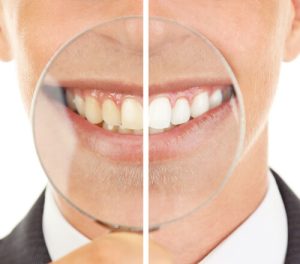When preparing for a deep cleaning of your teeth, commonly known as scaling and root planing, you might wonder, how many shots for deep cleaning teeth are typically required? The answer could be more straightforward, as it depends on various factors, including the extent of gum disease and your pain threshold.
This article will explore what influences the number of anesthetic injections necessary to ensure a comfortable and effective deep cleaning experience. Stay tuned as we delve into the details that tailor this procedure to your dental needs.
Introduction to Deep Cleaning: What Is Scaling and Root Planing?
Deep cleaning, consisting of scaling and root planing, is a critical dental procedure to combat periodontal disease, commonly known as gum disease. This treatment goes beyond regular dental cleaning by targeting the plaque and tartar buildup along and below the gum line; areas typically missed in most regular teeth cleanings.
- Scaling: This part of the deep cleaning process involves removing plaque and tartar from the tooth surface and beneath the gums. Dental hygienists use specialised tools, including ultrasonic devices, to eliminate these deposits contributing to gum inflammation and disease.
- Root Planing: Following scaling, root planing smooths the roots of the teeth, helping the gums reattach to the tooth surface. This step is crucial for restoring the health of the gums and preventing further bacterial colonisation that can lead to serious dental issues.
- Local Anesthesia: To ensure comfort, local anesthesia is often administered during deep cleanings, particularly if the gum disease is advanced and the cleaning needs to reach deeper pockets of infection.
Factors Influencing the Number of Anesthetic Shots Required
Determining how many anesthetic shots are needed for a deep cleaning can vary widely depending on several key factors. Each individual’s situation is unique, and understanding these variables can help set realistic expectations for the deep clean procedure.
Extent of Gum Disease
The severity and extent of gum disease can significantly impact the anesthesia required. More advanced stages of periodontal disease often involve deeper pockets and more extensive areas of inflammation, necessitating more anesthetic to ensure comfort during deep cleaning.
Patient Pain Threshold
Individual tolerance to pain varies greatly. Patients with a lower pain threshold may require more anesthetic to comfortably undergo the procedure without experiencing significant discomfort.
Treatment Area Size
The size of the area that needs treatment also plays a crucial role. Fewer injections may be needed if gum disease is localsed to just one part of the mouth. Conversely, more extensive anesthesia will be necessary if multiple mouth quadrants are affected.
Previous Experiences
Patients’ previous experiences with dental procedures can influence their anxiety levels and perception of pain, potentially increasing the need for more anesthetic to help them remain calm and comfortable during the treatment.
Understanding Local Anesthesia in Dental Procedures
 Local anesthesia is fundamental to many dental procedures, ensuring patient comfort and pain management. Here’s an explanation of how it works and its role in dental care:
Local anesthesia is fundamental to many dental procedures, ensuring patient comfort and pain management. Here’s an explanation of how it works and its role in dental care:
What is Local Anesthesia?
Local anesthesia refers to medications that temporarily numb a specific area of the body—in this case, the mouth—to prevent pain during dental procedures. Unlike general anesthesia, which affects the entire body and often induces sleep, local anesthesia allows patients to remain awake and aware, experiencing no pain in the targeted area.
Types of Local Anesthetics Used in Dentistry
Several local anesthetics are commonly used in dental settings, including lidocaine, the most prevalent, and others like articaine, bupivacaine, and mepivacaine. These anesthetics may be administered via injection near the site of the dental work or applied as a gel or ointment to the gum tissue.
How Local Anesthesia Works
Local anesthetics block the nerves in the affected area from sending pain signals to the brain. This is achieved by the local anesthetic or agent temporarily halting the influx of sodium ions in nerve cells, which are essential for conducting electrical signals in the body, including pain perception.
Safety and Effectiveness
Local anesthesia is safe for most patients and highly effective in managing pain during procedures ranging from simple dental cleanings to more invasive surgeries. Depending on the type of anesthetic used, the effects typically last from a few hours to several hours, allowing patients to undergo various procedures without discomfort.
Considerations and Contraindications
Although local anesthesia is generally safe, it’s not appropriate for everyone. Patients with specific medical conditions, like allergies to specific anesthetics, liver disease, or heart conditions, may need alternative pain management solutions. Additionally, the dentist will consider factors like the length of the procedure and the patient’s health history before selecting an anesthetic.
The Role of Pain Threshold and Dental Sensitivity
 An individual’s pain threshold and dental sensitivity are crucial in determining the approach and management strategies during dental treatments. These factors significantly influence how dental procedures are conducted, particularly concerning pain control and patient comfort.
An individual’s pain threshold and dental sensitivity are crucial in determining the approach and management strategies during dental treatments. These factors significantly influence how dental procedures are conducted, particularly concerning pain control and patient comfort.
Pain Threshold Variability: Pain threshold refers to the minimum point at which a stimulus—such as pressure, heat, or cold—causes pain that an individual can feel. This threshold varies widely among individuals. Some people may barely feel discomfort during dental procedures, while others might find mild treatments quite painful. Understanding a patient’s pain threshold allows dentists to tailor anesthesia and sedation levels to ensure comfort throughout the procedure.
Dental Sensitivity: Dental sensitivity, or tooth sensitivity, involves discomfort or pain in the teeth as a response to certain stimuli, including hot, cold, sweet, or very cold food, acidic foods and drinks, and even cold air. Patients with high dental sensitivity may experience more intense discomfort during routine dental cleanings or therapeutic procedures due to exposed dentin or receding gums, which expose the sensitive parts of the teeth.
Impact on Dental Care: Patients with low pain thresholds or high dental sensitivity require special considerations during dental treatments. Dentists might opt for stronger or additional local anesthesia or may use desensitising agents before or during the procedure to mitigate pain. Techniques such as laser dentistry, which is generally less painful than traditional methods, might be considered for highly sensitive patients.
Communication Is Key: Communication between the dentist and the patient regarding pain and sensitivity is essential. Patients are encouraged to discuss their previous dental experiences, sensitivities, and apprehensions with their dentist. This dialogue helps create a more personalised treatment plan that effectively addresses pain management, ensuring a more comfortable and positive dental care experience.
Typical Deep Cleaning Procedures and Anesthetic Practices
 A typical deep cleaning procedure, periodontal scaling and root planning are essential for treating periodontal disease and preventing its progression. This procedure involves specific steps and anesthetic practices to ensure patient comfort and effectiveness of the treatment. Here’s an overview of what happens during a typical deep cleaning session:
A typical deep cleaning procedure, periodontal scaling and root planning are essential for treating periodontal disease and preventing its progression. This procedure involves specific steps and anesthetic practices to ensure patient comfort and effectiveness of the treatment. Here’s an overview of what happens during a typical deep cleaning session:
Preparation and Anesthesia: Before beginning the deep cleaning, the dentist or dental hygienist will assess the severity of the gum disease and decide the necessity for anesthesia. Local anesthesia is commonly administered to numb the area and minimise discomfort, especially if deep pockets of bacteria are present or if the patient has sensitive teeth. The type and amount of anesthesia used depend on the patient’s pain threshold and the areas being treated.
Scaling: This initial phase of the deep cleaning process involves the dental professional utilising specialised tools, including an ultrasonic scaler and manual instruments, to eliminate plaque and tartar both above and beneath the gum line. The ultrasonic scaler uses vibrations to break up hardened tartar and water to flush out the debris and bacteria.
Root Planning: After scaling, the dental professional polishes the roots of the teeth to facilitate the reattachment of the gums to the teeth. Root planing also makes it more difficult for plaque to build up and accumulate along the root surfaces in the future.
Cleaning and Flushing: After scaling and root planing, the areas are thoroughly cleaned and irrigated. This phase aids in eliminating residual bacteria and decreasing inflammation in the gum pockets.
Application of Adjunctive Therapies: Depending on the severity of gum disease, the dentist may apply antibiotic gels or fibres in the gum pockets to help control infection and promote healing. This step is only sometimes necessary but can be beneficial in cases of aggressive periodontal disease.
Post-Treatment Care and Instructions: After the procedure, patients will be given guidance on how to maintain their teeth and gums at home to facilitate healing and prevent further infection. This includes recommendations for oral hygiene practices, such as brushing and flossing techniques and possibly using specific mouthwashes.
Follow-Up Visits: Deep cleaning may require more than one visit to the dentist, and follow-up deep cleaning appointments are crucial. These visits allow the dentist to monitor the healing process, make any necessary adjustments to the regular cleaning treatment plan, and perform additional cleaning if needed.
Post-Procedure Care: Managing Discomfort and Recovery
 After undergoing a deep cleaning procedure, such as scaling and root planing, following proper post-procedure care is crucial to manage discomfort and ensure a smooth recovery. Here’s how you can take care of yourself after the treatment:
After undergoing a deep cleaning procedure, such as scaling and root planing, following proper post-procedure care is crucial to manage discomfort and ensure a smooth recovery. Here’s how you can take care of yourself after the treatment:
Managing Pain and Discomfort: It’s common to experience sensitivity and discomfort after a deep cleaning. OTC pain relievers can effectively manage this. Your dentist might also recommend a desensitising toothpaste to help ease sensitivity to hot, cold, or sweet foods.
Use of Cold Compresses: If you experience swelling, applying a cold compress to the outside of your face in the treated area can help reduce inflammation and provide relief.
Salt Water Rinses: Washing your mouth with warm salt water several times daily can soothe tender or bleeding gums and help speed the healing process. This is a gentle way to keep the area clean and reduce the risk of infection.
Soft Diet: For a few days after the procedure, stick to a soft food diet to avoid aggravating your gums. Good options include yogurt, soups, scrambled eggs, and smoothies.
Good Oral Hygiene Practices: Continue to brush your teeth gently with a soft toothbrush and medicated toothpaste. Be careful around the gum line and treated areas. Floss gently, and avoid areas that are highly sensitive or still healing until they have recovered sufficiently.
Avoid Smoking and Alcohol: Smoking can inhibit your gums’ ability to heal and should be avoided after a deep cleaning procedure. Alcohol can also irritate the gums and should be avoided during the recovery period after teeth are deep cleaned up.
Follow-Up Appointments: Keep all scheduled follow-up visits with your dentist. These visits are important to check your tooth loss healing progress and to clean any remaining areas if needed.
Watch for Signs of Infection: Although rare, if you notice signs of infection, such as increased swelling, persistent pain, or bleeding from the entire mouth that doesn’t stop, contact your dentist immediately. Rapid response is essential to avoid additional complications.
Determining how many shots in a deep cleaning appointment are necessary varies based on individual needs and conditions. By consulting with your dental professional, you can receive a personalised treatment plan that ensures comfort and effectiveness throughout your deep cleaning process. Don’t let the uncertainty deter you; understanding your options is the first step toward better oral health.
If you’re wondering how many shots for deep dental cleaning you need or have any other dental concerns, don’t hesitate to call us at (02) 8880 9257 Cattani Compressors Australia. Our friendly team is ready to provide the information and care you need for a comfortable and effective treatment. Call today to schedule your appointment!
References
Tooth Scaling & Root Planing: Deep-Cleaning Treatments
https://my.clevelandclinic.org/health/treatments/23983-tooth-scaling-and-root-planing#:~:text=Scaling%20and%20root%20planing%20are,periodontitis%20(advanced%20gum%20disease).
Disadvantages and Advantages of Deep Cleaning Teeth
https://www.healthline.com/health/deep-cleaning-teeth
Dental Deep Cleaning: When Is It Necessary?
https://www.colgate.com/en-us/oral-health/gum-disease/teeth-deep-cleaning-and-when-you-need-it
Deep Cleaning | UT Dentistry
https://www.uthscsa.edu/patient-care/dental/services/deep-cleaning
What Is the Cost of a Deep Teeth Cleaning?
https://www.webmd.com/oral-health/what-is-the-cost-deep-teeth-cleaning



